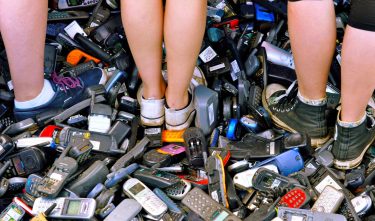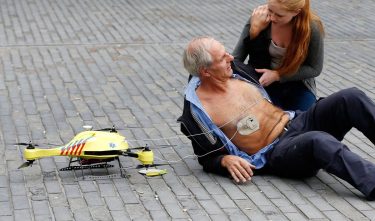Twenty years is an eternity
The world was a very different place when the Dutch Design Awards were founded 20 years ago. Nickelback was in the top 40, we still used Photoshop 8, the Blackberry was the ultimate ‘smartphone’ and Hyves hadn’t even been invented yet. In the world of design, technology and innovation, 20 years is a lifetime.
20 years of Dutch Design Awards has resulted in a wonderful archive of projects that, if you zoom out a little, give a very good impression of the development of our profession in various disciplines. I write this as chair of the Data & Interaction category, formerly known as Service & Systems. With this digital and innovative perspective, I want to reflect on three of my favourite projects that have been nominated or awarded in the past years. With the knowledge we have now, we can assess the projects again and reflect on the impact they have had since the Dutch Design Award.

Fairphone
When the jury crowned the FairPhone in 2013, the device had only just been launched on a small scale. They could not predict what the long-term impact would be. The FairPhone originated from a project with Waag Society. The mission was to make the electronic industry more honest and sustainable by scrutinising the entire chain and making improvements from mine to last mile. Ambitious for a small Dutch start-up. At the time, the jury called it a “fearless initiative”. It was noted that the FairPhone would not completely disrupt the existing market but that this initiative could show that it is possible to develop a telephone under fair conditions.
And that is exactly what the FairPhone has done. Yes, 400,000 devices have now been sold, all produced sustainably and honestly. But the true impact is far greater: a small challenger like Fairphone has shaken-up larger producers and paved the way towards a sustainable transition for the entire industry. Just as opposition parties in politics do not have power themselves, but they do shift the frame of reference in such a way that it gets the more established parties moving.
The ambitious sustainability goals of major players like Apple and Samsung will ultimately make the difference. They are not perfect yet, but the objectives are more ambitious than ever. And we own that partly to this small Dutch start-up that stood on the podium at the Dutch Design Awards 20 years ago.
Swapfiets
In 2018, we were slowly getting used to the ‘subscription economy’. Paying a fixed amount per month for our films and music was very logical in a world of digital content. But a subscription for a bike? That was a radical new idea in a traditional category.
The magic of Swapfiets is not in the bike itself, which is completely ordinary except for the blue tire. The difference is in the service. A service model that delivers a replacement bicycle on location, on the same day, was revolutionary at the time. That idea has now generated 250,000 subscriptions in 65 European cities. Swapfiets was labelled by the Financial Times last year as one of the 10 fastest growing European companies.
But the real promise of Swapfiets lies not only in growth and consumer comfort, but in the circular model. By always keeping materials in its own ecosystem, Swapfiets can potentially deliver a 100% circular product. This takes a lot of work, and there is still work to be done, but the company recently announced that it will be fully circular in 2025. The most popular model (the “Deluxe 7”) is already 88% circular as I write this.

Ambulance Drone
The last case shows the power of a pivot. Designer Alec Momont took hold of a very clear problem: people who suffer a cardiac arrest in the middle of the street have a 10% chance of survival. Helping these people with a defibrillator within two minutes can raise this percentage to 70%. The solution won a Dutch Design Award in 2015: a drone that delivers a defibrillator on location and uses a remote connection to give instructions to people on the spot who are willing to help. An ambitious project and at the time a daring choice by the jury to crown a project in prototype phase with a Dutch Design Award.
Alec developed several prototypes and entered into a partnership with Philips, TU Delft and the Hartstichting. Ultimately, the drone project failed due to European regulations.
But Alec didn’t stop there and went back to the drawing board, back to the essence of his solution: reducing the reaction time by cardiac arrest. He developed a mobile app that connects volunteers, patients and defibrillators. He succeeded in creating a network of volunteers across the country who can be called up in the event of a report and guided to the nearest defibrillator. This system is now operational and is used by over 200,000 volunteers.
And Alec? He graduated Magna Cum Laude, has given a TED talk, received attention from CNN & BBC and now works at Apple as principal designer of the Health products such as the Apple Watch.
What do these projects have in common? Design is more than aesthetics. The category Data & Interaction awards system designers. Designers who use data as a raw material to develop valuable interactions, and who embrace the power of technology to develop ideas that are infinitely scalable. These cases show that the scalable impact can be positive, for companies, people and, last but not least, our planet.